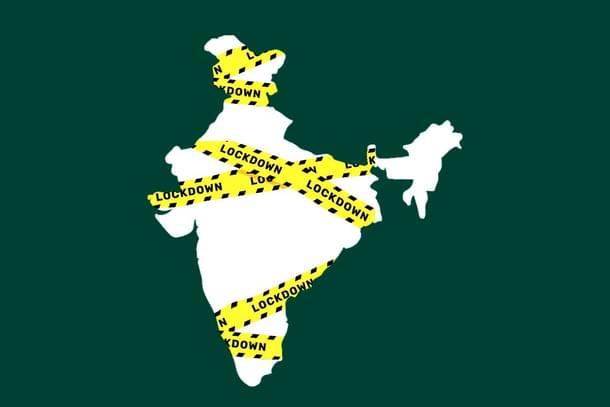Ideas
Day Zero For Ending The Lockdown On 3 May Is Today; Five Ways To Brace For The Risks Ahead
R Jagannathan
Apr 22, 2020, 12:44 PM | Updated 12:44 PM IST
Save & read from anywhere!
Bookmark stories for easy access on any device or the Swarajya app.


As we enter the final 11 days of our 40-day lockdown to slow down the spread of Covid-19 infections, we will find that policy choices are going to get tougher and politically contentious. We are now facing a classic dharma sankat, where we will have to choose between a greater and lesser evil.
On the one hand, the number of infections will rise to levels where it will start alarming everyone. We have already registered nearly 20,000 infections by 22 April; at the current doubling rate of seven-eight days, we are going to hit 300,000-400,000 by the end of May.
On the other hand, as the imperatives of reopening the economy take centrestage, we will discover that it cannot be micromanaged from the top. We can’t just say “Open Sesame” from Delhi and lo, behold, the economy will spring back to normal.
We are going to be in the unhappy situation where we have no option but to open up the economy almost fully — and quickly — to prevent a massive upsurge in unemployment at a time when infections may also get significantly worse before they get any better.
The right choices, in my view, are the following:
One, shift the health strategy from the blunt instrument of lockdowns to narrower containment zones restricted to some hotspots and areas within cities. Entire cities, districts, states, and regions cannot be locked down. This will allow 90 per cent of India to gradually limp back to life over the next three months.
Two, it is not going to be easy to 'calibrate' or fine-tune any move away from the lockdown. It has to be a widespread opening up, since supply chains are closely interlinked and geographically spread out. Also, in a services-oriented economy, how long are you going to keep domestic help, barbers, electricians, plumbers, delivery people and construction workers out of work?
Three, in order to open up after 3 May, when the 40-day lockdown is supposed to end, we need to start preparing protocols and guidelines to minimise health risks as work resumes in offices and factories. These protocols should be self-regulated by enterprises rather than be imposed with a heavy hand on businesses and trade.
We have to do things on the basis of trust rather than mistrust in future. Since mass transport is the key to opening up the economy, state governments and the corporate sector must expand purchase, leasing and hiring of buses and passenger vehicles on a large enough scale since this is the only way to reduce overcrowding, which is the biggest risk in the spread of Covid-19.
Four, the protocols and guidelines need to be communicated through mass media, state governments, in-house corporate channels, trade and industry associations, district and local body officials, housing societies and even slum groups in various cities.
The only real safeguard against the spread of Covid-19 after we open up is a well-informed population that knows how to protect itself to the maximum extent possible without staying indoors all the time. The only people who should be asked to stay indoors more than the rest are senior citizens, but even in their case we should not make this the norm. The old need their everyday walks and social connections to stay physically and mentally healthy.
Five, the state must expand testing and hospitalisation capacities by a factor of five or 10 from current levels over the next three months — by improvisation, if necessary — as the infection risks increase with opening up. This implies a massive investment in healthcare and healthcare professionals and non-medical support staff.
Since it will take a minimum of a week to 10 days to get all this preparation done and cascaded down to the last mile, the Narendra Modi government must begin preparations now — as of today — on the assumption that the lockdown will end on the midnight of 3 May.
The economic packages needed to help vulnerable small businesses and the poor must be in place well before that date. On 4 May, the money and assistance should hit the bank accounts of businesses and people.
Day Zero for ending the lockdown is today.
On another plane, as we end the lockdown, we will have to grapple with new realities.
First, there will be no going back to the old normal; we will, at best, create a new normal, where all sectors, whether formal or informal, will have to maintain higher levels of hygiene, health safety standards, and physical distancing at workplaces, public areas and even our homes. This will impact our costs, as all precautions have a cost-tag attached.
Consider how we may even treat our domestic help, when they return to our homes. Earlier, they used to come and go, cleaning, swabbing, dusting, cooking or other odd-jobs without much concern or supervision on our part.
Now, when you know they have to return to their tightly-packed homes after work, possibly using crowded public transport, you will have no option but to ensure they maintain hygiene and take extra precautions yourself. We will need to provide them with masks, hand-washing liquids, etc.
Even domestic work cannot return to the old normal. At workplaces and in public transport, the scale of caution will have to be much higher, involving higher costs, increased automation and fewer workers. Human beings are the weakest links in a pandemic.
This situation will last at least as long as no vaccine or cure for Covid-19 is discovered, but that means another year at least. By that time our behaviours and habits would have changed forever, or significantly. There is no going back to where we left off in January 2020.
The second truth we will discover is that you cannot ever 'calibrate' a perfect pathway from total lockdown to open movement. The word calibration has been used by economists, commentators (including me), and politicians when talking about how to move away from the lockdown.
But in a complex moving system like the economy, where human behaviours and supply chains work in mysterious ways to get production done and product moved to consumers, there is no such thing as a well-calibrated move to reopen the economy. It will be messy and disorganised, and, most importantly, it cannot be directed from the top, not from Delhi, not even from state capitals.
Consider how foolishly the Ministry of Home Affairs has drafted guidelines for the reopening of manufacturing outfits in “green zones” (districts with no Covid-19 cases). But the guidelines, framed under the harsh provisions of the Disaster Management Act, not only seek to penalise companies for not following protocols, but harsh action from the administration if any worker catches the virus. This is daft.
How can any company prevent a person from being infected by a virus when he has to interact with so many people not only at the place he works, but also on his way to and from home, and at home itself? Unless all companies create barracks for workers near factories, almost like how the army operates, this is impossible.
This is no different from telling bankers to lend and then sending vigilance officials after them when some loans go bad. Why would anyone lend if this is the underlying fear in their minds? Why would any factory reopen if managers are going to be hauled up for infections that happen despite precautions?
As Bajaj Auto managing director Rajiv Bajaj pointed out in a TV interview yesterday (21 April), the provisions for allowing the reopening of plants are draconian. He has been critical of the lockdown even earlier, saying it is a “solution looking for a problem.”
Bajaj is not fully right, for the lockdown was meant to achieve two goals: slow the spread of the infections, and, two, give the administration time to gear up with the necessary healthcare and testing infrastructure before it becomes unmanageable. But he is right to emphasise that the lockdown “is not the long-term answer to the health crisis. The young and the healthy need to go back to work.”
The third reality is that opening up area by area or district by district is always going to be sub-optimal and problematic. Reason: supply chains are widely spread out not only across geographies and districts, but also globally.
When Bajaj makes a two-wheeler, he cannot manufacture and assemble the vehicle at his Uttarakhand plant or even at Chakan in Maharashtra. Some parts come from outside, and if that component sector is in a red zone, a mobike made in the green zone cannot roll out to the showroom. A part that is fully imported may have to come from Mumbai port, and Mumbai is the city with the highest number of infected patients in the whole country. Large parts of the city are under stringent lockdowns.
Jagannathan is former Editorial Director, Swarajya. He tweets at @TheJaggi.





